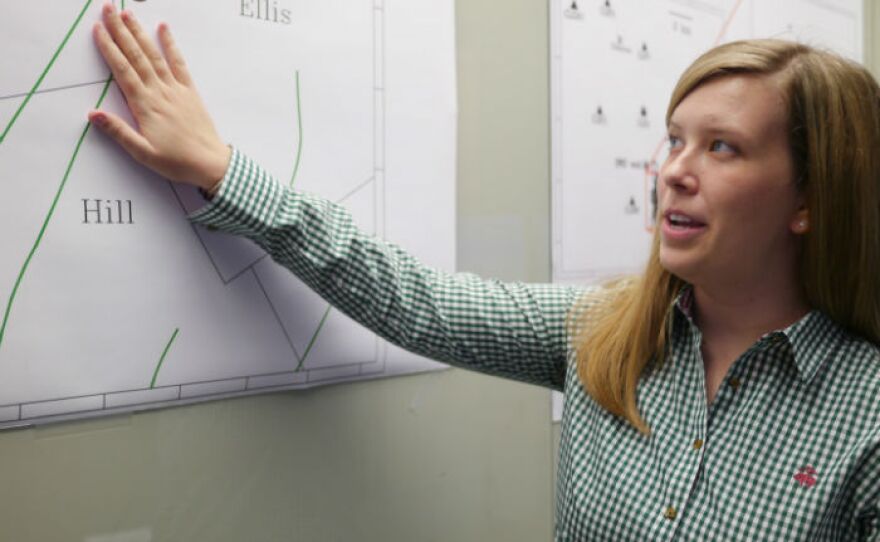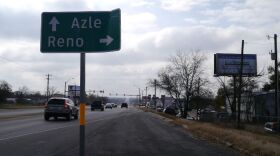[Note: This story aired in 2013.]
About 20 earthquakes jolted North Texas in November 2013 -- and they kept hitting Parker County and parts of Tarrant County in December 2013.
This follows dozens of small earthquakes that have hit parts of North Texas in recent years.
What’s causing all of the quakes?
Some point to natural gas well drilling -- and the use of disposal wells to store wastewater from the drilling. There’s been a gas drilling boom in the Barnett Shale, a massive geological formation that covers about 20 North Texas counties.
This week, researchers at Southern Methodist University in Dallas released a report that shows a possible connection between an earlier round of earthquakes in Cleburne in Johnson County and disposal wells used during drilling.
They say they can't rule out a link between the saltwater disposal wells, which are also called injection wells, and more than 50 quakes in 2009 and 2010. None of the Cleburne quakes caused major damage or injuries.
“Because there were no known previous earthquakes, and the located events were close to the two injection wells and near the injection depth, the possibility exists that earthquakes may be related to fluid injection,” the report states.
In the Fort Worth Basin, there are more than 2,400 injection wells – they contain water that's a biproduct of gas and oil production. But the vast majority do not have earthquakes associated with them, SMU researchers said.
"Yes, these events were near two injection wells, but if you look at a map of all the injection wells across Texas, they're everywhere," said SMU researcher Ashley Justinic, the report's senior author.
"A foundation for understanding earthquakes"
The report states that while wastewater disposal might be linked to the Cleburne earthquakes, "there has been no evidence that hydrofracturing, drilling, or natural gas production played any role in the events based on event timing, size distribution, and kinematics."
The Railroad Commission of Texas, the state agency that regulates the oil and gas industry, says it has no data that links hydraulic fracturing activities to earthquakes and has found no significant correlation between the seismic activity and injection practices.
Professor Brian Stump of SMU's earth and science department says studies like the one his university produced can help.
"This provides a foundation for understanding earthquakes in the Central and Eastern U.S. in a broader context," Stump said. "These are very small earthquakes -- barely large enough to be felt. The only concern is will they become larger, and that's a question I can't answer."
Historically, there haven't been reports of earthquakes in the Forth Worth Basin. But the recent seismic activity in North Texas is part of a broader trend stretching across the Central and Eastern U.S.
Stump says the evidence does not support fracking, or the breaking of rocks, as a cause of the quakes.
So the question remains: Why the earthquake swarms?
"We don't know the answer to that, but it is an interesting correlation in terms of time and space," Stump said.
There are additional studies by the U.S. Geological Survey and the National Academy of Sciences that might answer more questions about the latest quakes in Azle and Reno. The good news: Geophysicists say in North Texas the fault lines so far appear to be small, and there's no evidence of a large quake coming.
Azle residents point to drilling
SMU worked with the University of Texas at Austin to conduct the research, which appears in the December edition of the Bulletin of the Seismological Society of America.
One of the scholars in the SMU-UT study, Cliff Frohlich, associate director of the Institute for Geophysics at UT Austin, has led research into links between oil and gas drilling activity and manmade earthquakes. His study of earthquakes in the Barnett Shale found that disposal wells were responsible, StateImpact Texas has reported.
This isn't comforting news to Carol Kowalczyk. She's 80, and lives in Azle, the small town in northwest Tarrant County that's experienced several quakes in recent weeks. She described the last quake she felt.
"Boom," she said, "and I told my husband, 'I think that was an earthquake.'"
KERA recently visited residents in Azle. Some said they don't think the earthquakes are natural -- they blame drilling.
"They say it ain't what happens, but till then, we didn't have it,” Fred Raub told KERA. “You gotta drill about every mile. You just start looking around at all the drills they're putting down."
Another Azle resident, Thomas Reeves, strongly believes there's a link to oil and gas drilling.
"Because it's kind of rare in Texas for earthquakes, especially in just a small area," he said.
The U.S. Geological Survey says the number of earthquakes has increased dramatically in recent years in the Central and Eastern parts of the United States. USGS scientists have studied whether the earthquakes are natural or man-made –and they’ve determined there’s some sort of connection between drilling wells and the quakes.
“USGS scientists have found that at some locations the increase in seismicity coincides with the injection of wastewater in deep disposal wells,” the organization says on its website. “Much of this wastewater is a byproduct of oil and gas production and is routinely disposed of by injection into wells specifically designed and approved for this purpose.”
[Note: This story aired in 2013. For the latest on the 2015 earthquakes in and near Irving, click here.]





